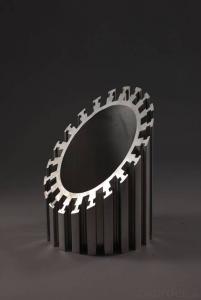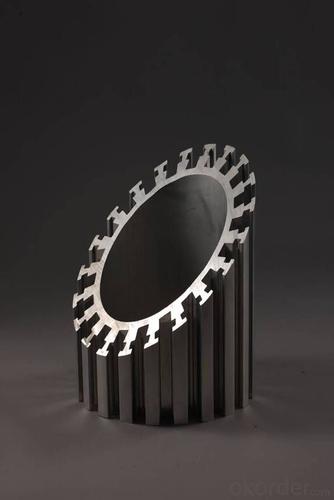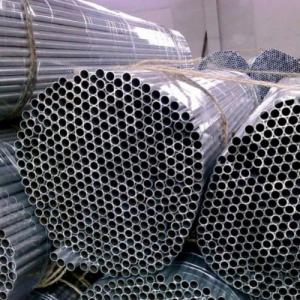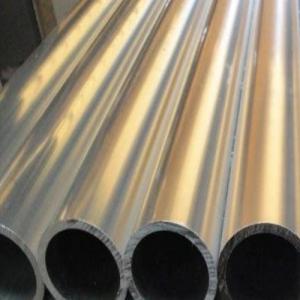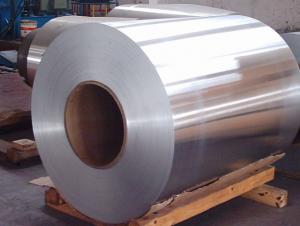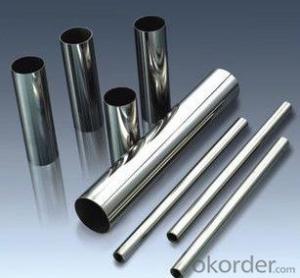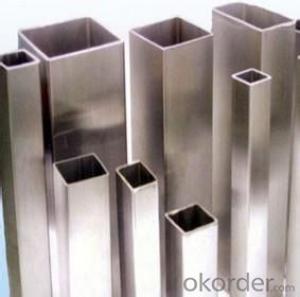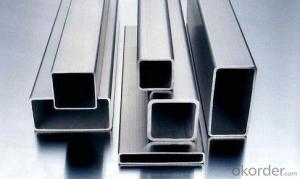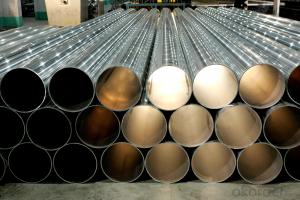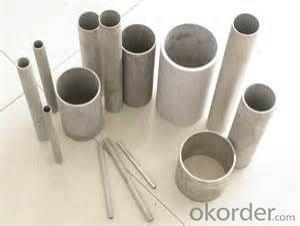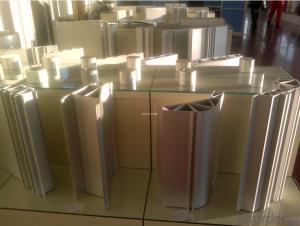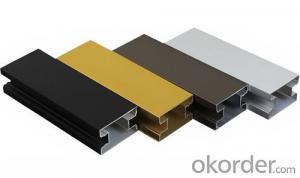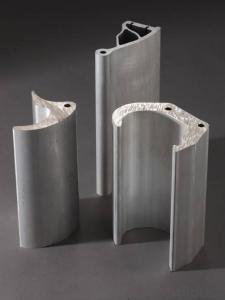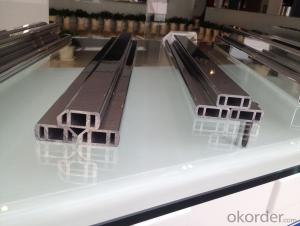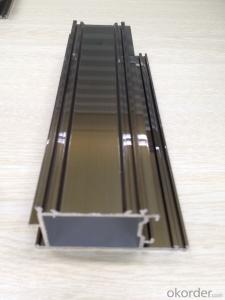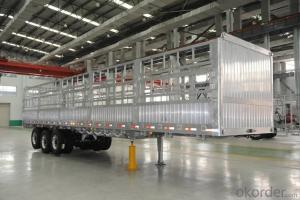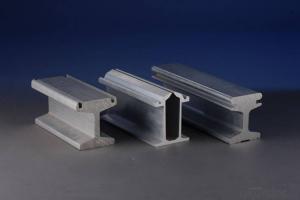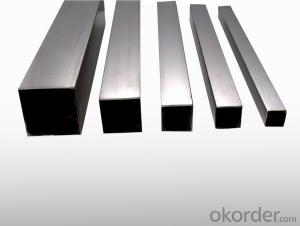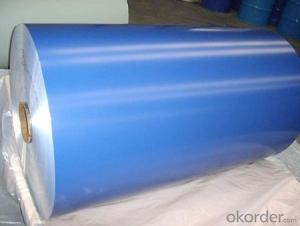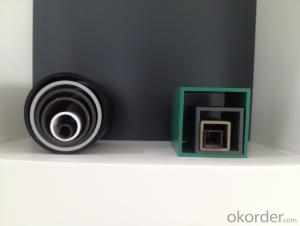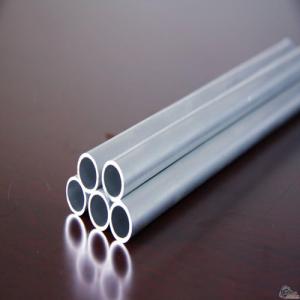Industry Aluminum Profiles for Aluminum Pipes
OKorder Service Pledge
OKorder Financial Service
You Might Also Like
We are the largest aluminum profilemanufacture in
Material | Alloy Aluminum 6063,6061,6005,6082 or customer nominated |
Temper | T3, T4, T5, T6 and other |
Surface | Anodize, electrophoresis, powder coating, PVDF coating, etc. |
Colour | Any colour based on Standard Germany RAL Mark |
Length | Not more than 16 meters |
Good Package | Inner plastic film /outside carton/wooden pallets |
Payment Method | T/T, L/C, etc |
Delivery Time | Normally 2-4 weeks, Delivery time can be consulted. |
Press Machine | 500-12500 tons all together 93 press lines. |
Fabrication | 1. Furniture 2. Drilling; 3. Bending; 4. Cutting; 5. etc. |
Certificate | ISO/TS 16949,DNV,IRIS,CCS,AFA,etc. |
Dies | 1. Using our dies, no fee; |
2. Using customer drawing, opening dies, usually about 5~50 tons then the dies cost can be refunded. | |
3. Die cost is negotiable base on the order quantity | |
Capability | Annual output 800,000 tons |
- Q: The difference between aluminium tubes 1060 and 6063
- 6063 Aluminum Alloy profile with its moderate plasticity, good heat treatment strength, good welding performance and anodic oxidation treatment, surface color gorgeous many advantages and is widely used in building materials, irrigation pipe, for the vehicle, bench, furniture, elevator, fence tube, rod, etc. profile.
- Q: Can aluminum pipes be used for heat transfer applications?
- Certainly, heat transfer applications can make use of aluminum pipes. Aluminum boasts exceptional thermal conductivity, enabling efficient heat transfer between different areas. This renders aluminum pipes highly suitable for situations requiring heat transfer or dissipation, such as in HVAC systems, heat exchangers, radiators, and air conditioning units. Moreover, aluminum pipes are lightweight, resistant to corrosion, and economically viable, rendering them a favored selection across various industries.
- Q: Maintenance personnel, Hisense inverter air conditioning with copper or aluminum tube?
- Aluminum recommended not to buy Hisense's refrigeration is not good
- Q: Can aluminum pipes be used for irrigation valves?
- Certainly! Aluminum pipes are suitable for irrigation valves. They are commonly utilized in irrigation systems because of their lightweight, durable, and corrosion-resistant properties. These pipes are an excellent option for conveying water as they can endure various weather conditions without rusting or deteriorating. Moreover, the installation of aluminum pipes is effortless, which makes them a cost-effective alternative for irrigation systems. However, it is crucial to ensure that the aluminum pipes utilized for irrigation valves are adequately coated or treated to prevent any chemical reactions with water or soil. In conclusion, aluminum pipes are an appropriate choice for irrigation valves and can efficiently distribute water to crops and plants.
- Q: Do aluminum pipes require any special maintenance?
- In general, there is no need for any special maintenance for aluminum pipes. Nevertheless, it is crucial to ensure that they remain free from debris or substances that might lead to corrosion. To maintain the appearance and functionality of the aluminum pipes, it is adequate to clean them regularly using mild soap and water. Furthermore, it is recommended to check for and fix any leaks or damages to guarantee the longevity and efficiency of the piping system. Overall, aluminum pipes are renowned for their durability and rust resistance, making them a low-maintenance choice for diverse applications.
- Q: Can aluminum pipes be used for irrigation systems?
- Yes, aluminum pipes can be used for irrigation systems. Aluminum pipes are lightweight, corrosion-resistant, and durable, making them suitable for various agricultural applications, including irrigation. They are commonly used for transporting water from a water source to the irrigation system, as well as for distributing water to the crops. Additionally, aluminum pipes have a long lifespan and require minimal maintenance, making them a cost-effective choice for irrigation systems. However, it is important to consider the specific requirements of the irrigation system, such as pressure ratings and water flow, to ensure that the aluminum pipes are properly sized and installed for optimal performance.
- Q: How to control the hardness of aluminum pipe?
- As a kind of high strength aluminum alloy, heat treatment can be strengthened, annealing, quenching and heat under the condition of rigid plasticity, good welding, gas welding and argon arc welding in aluminum has the tendency of intergranular crack formation; aluminum hardening in quenching and cold cutting performance is good and bad in annealing state when.
- Q: Which is the high price of 6063 and 6061 aluminium tubes?
- The same material profiles, the average length of the same unit, the weight of the high price.
- Q: Are aluminum pipes suitable for architectural purposes?
- Yes, aluminum pipes are suitable for architectural purposes. They are lightweight, durable, and corrosion-resistant, making them ideal for various architectural applications such as building facades, handrails, and structural components. Additionally, aluminum pipes offer flexibility in design due to their versatility in shape and size, allowing architects to create unique and aesthetically pleasing structures.
- Q: What are the different sizes of aluminum pipes available?
- There are various sizes of aluminum pipes available, ranging from small diameters like ¼ inch to larger ones like 12 inches or more. The specific sizes will depend on the manufacturer and the intended application of the pipe.
Send your message to us
Industry Aluminum Profiles for Aluminum Pipes
OKorder Service Pledge
OKorder Financial Service
Similar products
Hot products
Hot Searches
Related keywords
